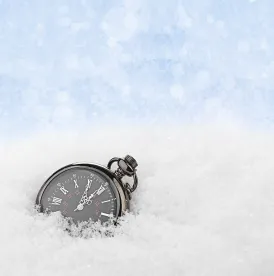Whether we have a strong winter impacts many things. From our road conditions driving to work, the extent of demand for home heating fuels, how our livestock will fair, and our ski season (including vital tourist revenue that results from ski season), predicting the degree of the intensity of the winter season can be important.
But this year it looks like it could be anyone’s guess…some degree of certainty would be nice, as it can have a major impact on energy forecasts as well. For example, natural gas and propane demand.
The U.S. Energy Information Administration (“EIA”) released its Short-Term Energy Outlook (“STEO”) earlier this month, which can be found here. The October STEO contains a lot of interesting information, including, but not limited to, that the “EIA expects downward oil price pressure to emerge in the coming months as global oil inventories rise during the first half of 2020.”
However, what really caught my eye in the October STEO was the EIA’s prediction as to the upcoming winter.
In my neck of the woods, cattle ranchers are bracing for a big winter – folks are beefing up (pun intended) winter structures in their pastures to give their cows some protection from intense snow storms, and old timers are warning to push calving season later this year to avoid calves being born during the worst of the early spring snow storms. Many people in my home state of Wyoming have already buttoned up their summer homes in the mountains and have had snowfall since the beginning of the month. According to The Weather Channel article entitled, It’s a Record-Snowy Start For the Northern Rockies and Plains and Winter Is Still Over 2 Months Away, some areas have already been pounded by record-dumping snowstorms.
In fact, The Old Farmer’s Almanac similarly predicts in its winter 2019-2020 forecast, which can be found here, “below-normal winter temperatures” through most of the U.S. coupled with significant snowfall. The 2020 Old Farmer’s Almanac predicts a “snow-verload” of “frequent snow events – from flurries to no fewer than seven big snowstorms coast to coast, including two in April for the Intermountain region west of the Rockies.”
The October STEO takes a different stance – The EIA forecast as to the winter fuels outlook is based upon a mild winter. Indeed, the October STEO provides the following winter fuels outlook:
-
“The [EIA] forecasts that average household expenditures for all major home heating fuels will decrease this winter compared with the last. This forecast largely reflects warmer expected winter temperatures compared with last winter.”
The National Oceanic and Atmospheric Administration (“NOAA”) also released the following prediction: Winter Outlook: Warmer than average for many, wetter in the North, which forecasts “warmer-than-average temperatures…for much of the U.S. this winter.” NOAA predicts that “[n]o part of the U.S. is favored to have below-average temperatures this winter.”
The Weather Channel seems to take the middle road in its forecast entitled, Winter 2019-20 Will Likely Be Warmer Than Average in Southern U.S. & Colder Than Average in Parts of Northern Tier, and also includes the following disclaimer: “Given some of the conflicting factors listed above, this forecast will likely change, so be sure to check back to weather.com for updates.”
What will this winter be like and what will the weather’s impact be on the domestic energy outlook? It is anyone’s guess!



 />i
/>i

